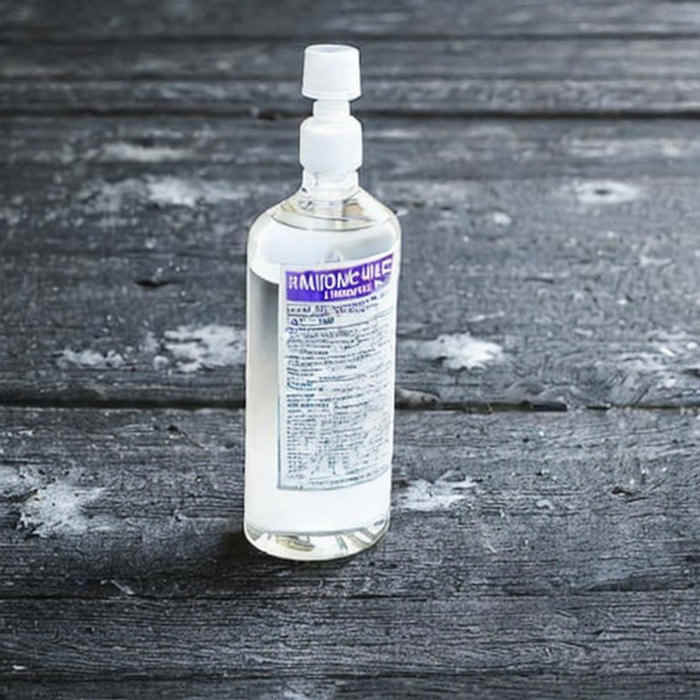Stocking Up On Rubbing Alcohol

Rubbing alcohol is used for many out purposes beyond first aid; it may also be used as a solvent for cleaning surfaces and disinfecting equipment. Rubbing alcohol can also be used as a fire starter or as a reliable fuel source in an emergency.
By including rubbing alcohol in your emergency supplies, you're ensuring that you have a reliable tool for health and sanitation. As part of a comprehensive emergency plan, rubbing alcohol can make a significant difference in your ability to stay safe and healthy when traditional resources are limited.
While rubbing alcohol does have long shelf life, it does expire. If you use rubbing alcohol after its expiration date, does it still function as intended? What you need to know about the printed dates, which are required by law, is that you don't have rubbing alcohol one day and the next day it becomes useless. With alcohol it is simply a matter of strength.
From day one after it is made, its strenght which is measured in percent begins to go down. You can buy rubbing alcohol that is 90% rubbing alcohol and 10% water for instance. So its relative strength is 90%. As the rubbing alcohol sits it is going to experience some degree of evaporation. And as you may know alcohol evaporates much faster than water. So, as evaporation occurs the strength, percentage of alcohol will begin to drop. And it gets weaker. The expiration date is just the factories guess as to when the strength has dropped to 90% of the original strength.
What this means is if you buy one bottle of 90% rubbing alcohol and another bottle of 70% alcohol that when the 90% bottle has reached its expiration date it should still be stronger than the 70% rubbing alcohol when that 70% solution was originally purchased.
The entire purpose of purchasing goods—in this case, rubbing alcohol—in advance is to ensure that you have enough of the product on hand to meet demand in the event of a future disaster. It is therefore crucial to purchase the highest concentration of alcohol that is offered for storing in order to maximize its shelf-life.
The quickness of when your rubbing alcohol becomes very weak can be greatly extended by how you store it. You should strive to prevent your rubbing alcohol from evaporating. Always keep the alcohol in a container with a seal-able lid, top or cap. The permeability of the container can also be a factor. Glass is an excellent container to prevent atmospheric permeating. But, by far the seal-able cap will always be the most critical route of degredation.
Also, as you probably know the hotter water is the faster it evaporates. This is also true of rubbing alcohol. So the colder the rubbing alcohol is, the longer it will last.
Rubbing alcohol is clear and colorless. It has a strong, sharp smell. The main ingredient in rubbing alcohol is isopropyl alcohol. Most forms of rubbing alcohol have at least 60 percent isopropanol, while the remaining percentage is water.
If you've ever had an injection or a blood sample drawn, rubbing alcohol was probably used to clean your skin beforehand. It feels cool when applied to your skin due quick evaporation. Isopropyl alcohol is also the main ingredient in many hand sanitizers. Rubbing alcohol can help prevent the spread of viruses, such as the new coronavirus, along with seasonal cold and flu germs.
However, if your hands are visibly dirty or greasy, washing your hands with soap and water first and then use rubbing alcohol as your sanitizer.
You can also use rubbing alcohol on surfaces such as door knobs to disinfect them.
Stated expiration dates are usually listed as 2 to 3 years, but as we know you shouldn't throw out your supply just because it has reached this magical date. If you have difficulty lighting old rubbing alcohol, then it is probably to the point of true expiration for use. Better than water in my opinion, but if you have the option to replace it, then do so.
As mentioned briefly above, rubbing alcohol can be used as a heat source. One of the great things about its use there, is that it burns so cleanly. Rubbing alcohol will burn with blue flame and virtually no smoke at all. This is good because long-term use indoors from things such as candles or incense, will deposit soot in your home. Not so with alcohol.
Also, when using rubbing alcohol as a heat source the higher the percent of alcohol the more heat it will impart because the water component won't be absorbing as much of the heat.
Avoid getting rubbing alcohol in your eyes or nose. If you do, rinse the area with cool water for 15 minutes. Rubbing alcohol is flammable. Keep it away from fire, sparks, electrical outlets, candles, and heat. Isopropanol is toxic when ingested.
Look at the packaging of your rubbing alcohol. You should see an expiration date, typically printed on the top or back. The expiration date doesn't start when you buy it so trying and pick the freshest bottles you can find. Since alcohol is still in expired bottles of rubbing alcohol it may still be somewhat effective after its expiration date.


